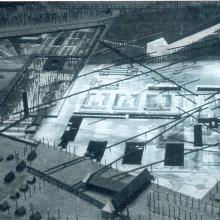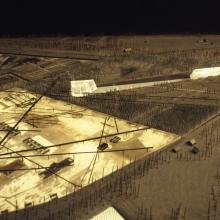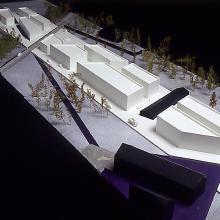Project MoUrning Details
Project MoUrning is the name of Libeskind’s design for the Nazi-barracks area next to the Sachsenhausen Concentration Camp Memorial in Oranienburg. Project MoUrning is a pun on the need to mourn a difficult past while opening up room for the present and future (a new morning).
Libeskind’s Project MoUrning distills the poetics of counterpreservation in a poignant and iconoclastic way. Libeskind’s project zoned the site in three sections: one for new buildings (the Hope Incision); one for reforestation; and one for the ruins and remains of Nazi buildings. These ruins formed a vast memorial landscape, sealed off from prosaic uses through a network of crisscrossing water channels and pathways. Visitors would meander around the ruins, which would be made visible and meaningful through this landscape design. At the same time, the water channels and the exposure to air would promote further change and decay instead of keeping the ruins as fossils from the Nazi era.
Libeskind departed from conventional architectural, historical, and archaeological preservation principles; at the same time, his design highlighted and exposed the complex history of the site more clearly and openly than the residential program would have.



